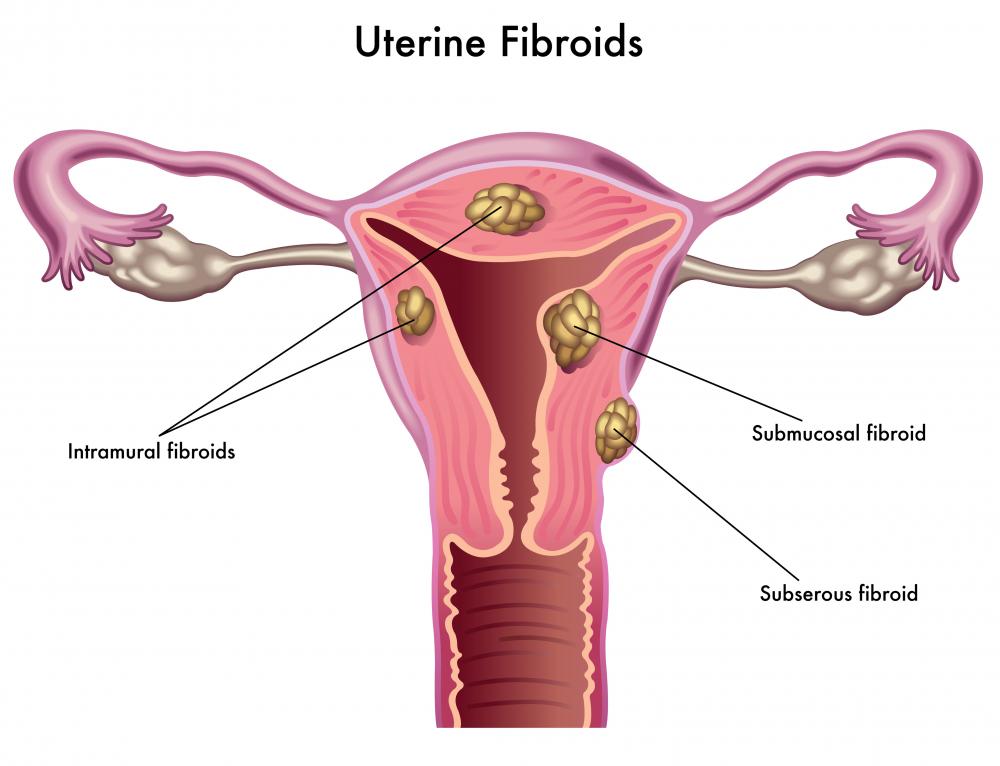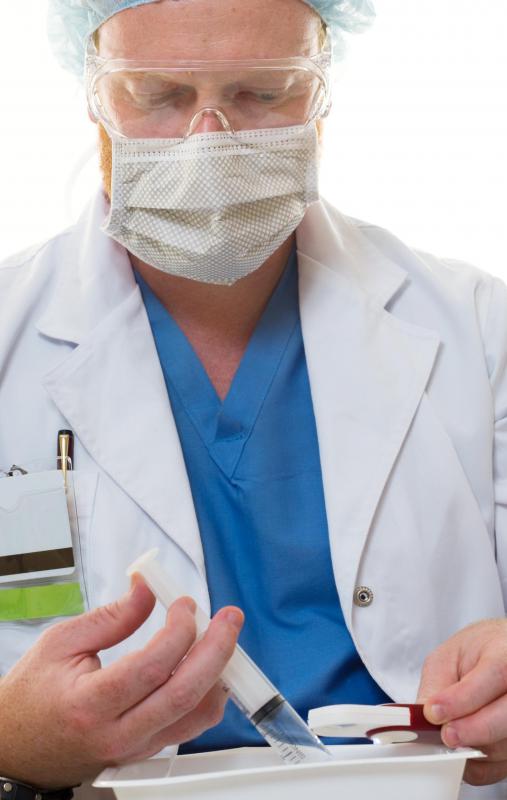At WiseGEEK, we're committed to delivering accurate, trustworthy information. Our expert-authored content is rigorously fact-checked and sourced from credible authorities. Discover how we uphold the highest standards in providing you with reliable knowledge.
What is a Benign Growth?
A benign growth is basically a growth of cells that are not cancerous and do not spread to other parts of the body. In some cases, people use the term benign growth to indicate a growth that does not cause harm. While this is often accurate, it does not cover all types of benign growths. There are some growths that are not cancerous, yet still adversely affect a person’s health.
There are many types of benign growths, but one of the most familiar may be a mole. This type of benign growth is very common and consists of brown or black tissue that looks like a bit of discolored skin; it may be either flat or raised. Moles aren’t usually harmful, though some people dislike the way they look. A mole is actually a collection of cells that are referred to as melanocytes, which are cells responsible for pigment. Moles are thought to develop because of exposure to the sun and genetics.

Uterine fibroids are also benign growths, also called benign tumors, that grow in a woman’s uterus. In most cases, women who have uterine fibroids are unaware that they have them until a doctor discovers them. This doesn’t mean, however, that they never cause symptoms and cannot cause unpleasant health effects. In some cases, uterine fibroids cause excessive menstrual bleeding and pain. Sometimes, they can even complicate pregnancy or make it difficult for a fertilized egg to implant in a woman’s womb.

With some types of benign growths, it can be difficult to determine whether cancerous cells are present or not. For example, if a person has a fluid-filled cyst, doctors may use diagnostic imaging to evaluate it. If it does not look suspicious, they may feel safe in saying it is unlikely to be cancerous. On the other hand, however, a cyst that seems to contain some solid tissue may be more worrisome. Though they may think the growth is benign, doctors may order a biopsy to look for cancerous cells; this way, they can be sure the patient doesn’t have a malignant, or cancerous, growth that simply looks benign.

When a patient has a benign growth, it is usually a good idea to allow doctors to evaluate it. Sometimes common growths, such as moles, can turn out to be something much more serious. After a growth is determined to be benign, a doctor may also recommend follow-up evaluations to make sure it isn’t changing.
AS FEATURED ON:
AS FEATURED ON:


















Discussion Comments
I have heard some researchers say that self breast checking has led to a lot of panic over benign tumor growth.
There are a lot of reasons why you might have a lump in your breast, so if you find one you shouldn't panic about it, although you should get it checked.
I find it interesting that some research has said that all the self breast exam literature has not led to much more early detection, as much as it has led to a lot of false alarms.
I wonder if this is because by the time most lumps are at the point where you can find them, they are already causing symptoms anyway?
At any rate, the recommendation is that if you are at risk, you should go and get screening, rather than rely on your own breast exams.
If you have a mole that you think is suspicious, do not let your doctor put you off about it.
My mother had a mole that looked suspicious and more than one doctor brushed off her concerns about it.
Finally, she mentioned it offhand to yet another doctor and he decided it was worth taking a small biopsy.
Of course, it turned out not to be a benign skin growth but actually a melanoma, which is the most virulent form of skin cancer. My mother could easily have died in the three years that passed before someone actually decided the risk wasn't worth it.
So, if you are worried make sure your doctor takes a biopsy and gets it analyzed.
In this case it is much better to be safe than sorry.
Post your comments